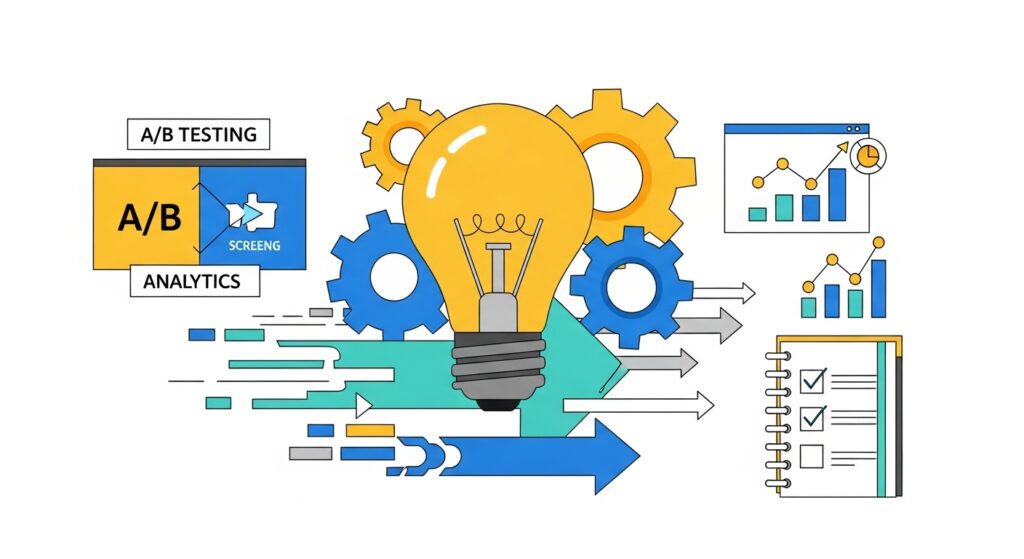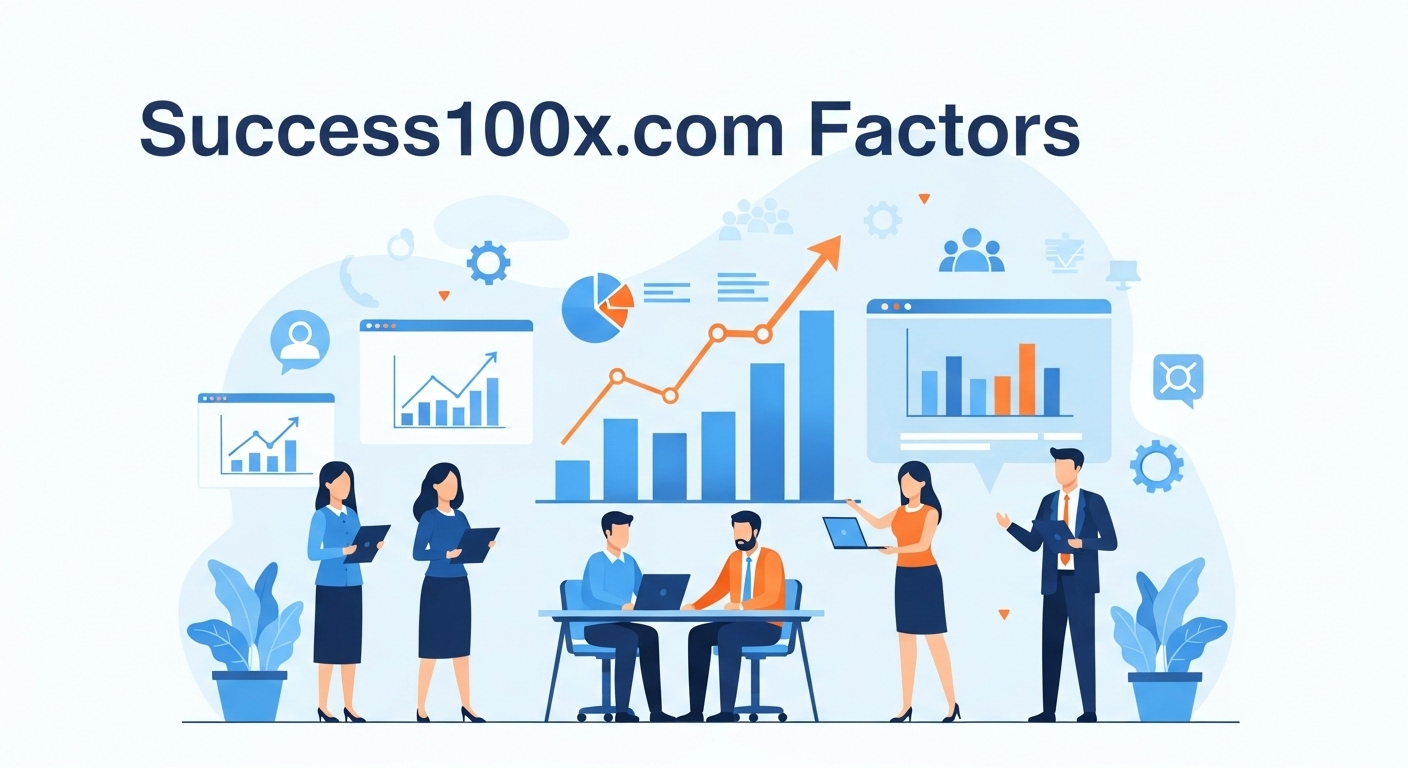Growing online is not only about numbers. Many sites show big traffic or revenue, but the real story lies in what drives those results.
These hidden parts, often called success100x.com factors, make growth steady and long-lasting. When a business or platform understands them, it can plan better, avoid mistakes, and build stronger trust.
This article explains these factors in plain and simple words. You will learn why vision matters, how to build strong systems, how to measure growth, and why community and feedback are at the heart of success. The goal is to give you a clear path, not just ideas, but steps you can apply in real life.
Clarity in Vision
Every journey starts with a direction. In business, this is called vision. Without it, teams lose focus, and work feels scattered.
A clear vision answers three simple questions:
- What are we trying to achieve?
- Why does it matter?
- How will we reach there?
For example, if your goal is to build a learning site, the vision could be: “To make learning simple, fast, and open for all.”
How to Build Vision Step by Step:
- Write a short statement that is easy to understand.
- Share it with your team often.
- Break it down into smaller goals like weekly or monthly steps.
- Test it with users to see if it matches what they want.
| Step | Action | Benefit |
|---|---|---|
| Write | Simple statement | Gives direction |
| Share | With team & users | Builds trust |
| Break | Into small goals | Keeps energy high |
| Test | Get feedback | Adjust if needed |
Pros: Easy to guide a team, saves time.
Cons: Needs regular updates when things change.
Robust System Setup

Vision is not enough. To make it real, you need strong systems. A weak system fails when traffic grows or when errors appear.
Key System Parts:
- Workflows: Smooth steps for account sign-up, payments, or content use.
- Servers & Tools: Reliable hosting, secure plugins, fast APIs.
- Backups: Safe copies in case of crash.
- Monitoring: Alerts when errors or slowdowns happen.
Think of it like building a house. Strong walls, safe wiring, and a solid base keep it standing.
Pros: Trust from users, fewer crashes.
Cons: Setup costs more in time and money.
Key Metric Tracking
Numbers tell the truth. But not all numbers are useful. Views may look big but may not show true growth. The smart way is to track engagement metrics.
Useful Metrics:
- Repeat visits
- Conversion rates
- Time spent on site
- Bounce rates
- Growth in sign-ups
| Metric | What It Shows | Why It Matters |
|---|---|---|
| Repeat visits | Loyal users | Growth base |
| Conversion rate | Actions done (buy, sign up) | Measures success |
| Time on site | User interest | Content value |
| Bounce rate | Who leaves fast | Shows weak areas |
Pros: Helps plan better.
Cons: Can be tricky without clear formulas.
Community Engagement
No growth is real without people. A community is not just visitors; it is active users who share, comment, and trust you.
How to Build Community:
- Be present where your users are (social media, forums, or chats).
- Share updates often.
- Ask questions and respond.
- Run surveys and polls.
- Show users you act on their feedback.
Example: A site that posts polls every week and replies to user comments grows faster than one that only posts content.
Pros: Builds loyalty and word-of-mouth.
Cons: Takes time and effort daily.
Adapting and Innovating

Markets change fast. What worked yesterday may fail tomorrow. This is why adaptation and innovation are vital.
- Watch trends: New tech, new tools, or user needs.
- Test ideas: Run small A/B tests.
- Learn quickly: If it fails, adjust fast.
- Keep records: Track what worked and why.
Example: Many platforms now use AI to suggest content. Those that adopted early gained more users.
Pros: Stays fresh, attracts new users.
Cons: Needs a creative team and budget.
Scaling with Feedback
Growth often feels messy. Feedback turns it into a smooth ride.
Types of Feedback:
- User feedback: Reviews, ratings, and comments.
- Team feedback: Notes from meetings.
- Data feedback: Reports and dashboards.
Make feedback loops simple. After every new feature or campaign:
- Collect feedback.
- Summarize lessons.
- Adjust plans.
Pros: Keeps growth steady.
Cons: Too much feedback can confuse.
Pros and Cons of Success100x.com Factors
| Pros | Cons |
|---|---|
| Clear vision guides growth | Needs regular updates |
| Strong systems build trust | Costly to set up |
| Metrics show true progress | Numbers can confuse |
| Community builds loyalty | Takes daily effort |
| Innovation keeps fresh | Needs budget |
| Feedback improves scaling | Can slow decisions |
Conclusion
Success does not happen by chance. It comes from clear vision, strong systems, smart metrics, and active community. Add in innovation and feedback, and you have a full circle.
These success100x.com factors are not complex theories. They are simple steps, easy to understand, and possible to apply. Start by setting vision, build your systems, measure growth, talk with your community, and learn from every step.
Growth is not only about reaching more people. It is about keeping them, serving them better, and growing with them. By focusing on these factors, your platform can turn small wins into lasting success.
You may also like: PedroVazPaulo Entrepreneur: Business & Coaching Insights
Talha Younas is a modern-day generalist. He writes with clarity and ease, covering technology, digital trends, lifestyle tips, and beyond. With a balanced approach, he brings a reliable and relatable voice to everyday reading.

